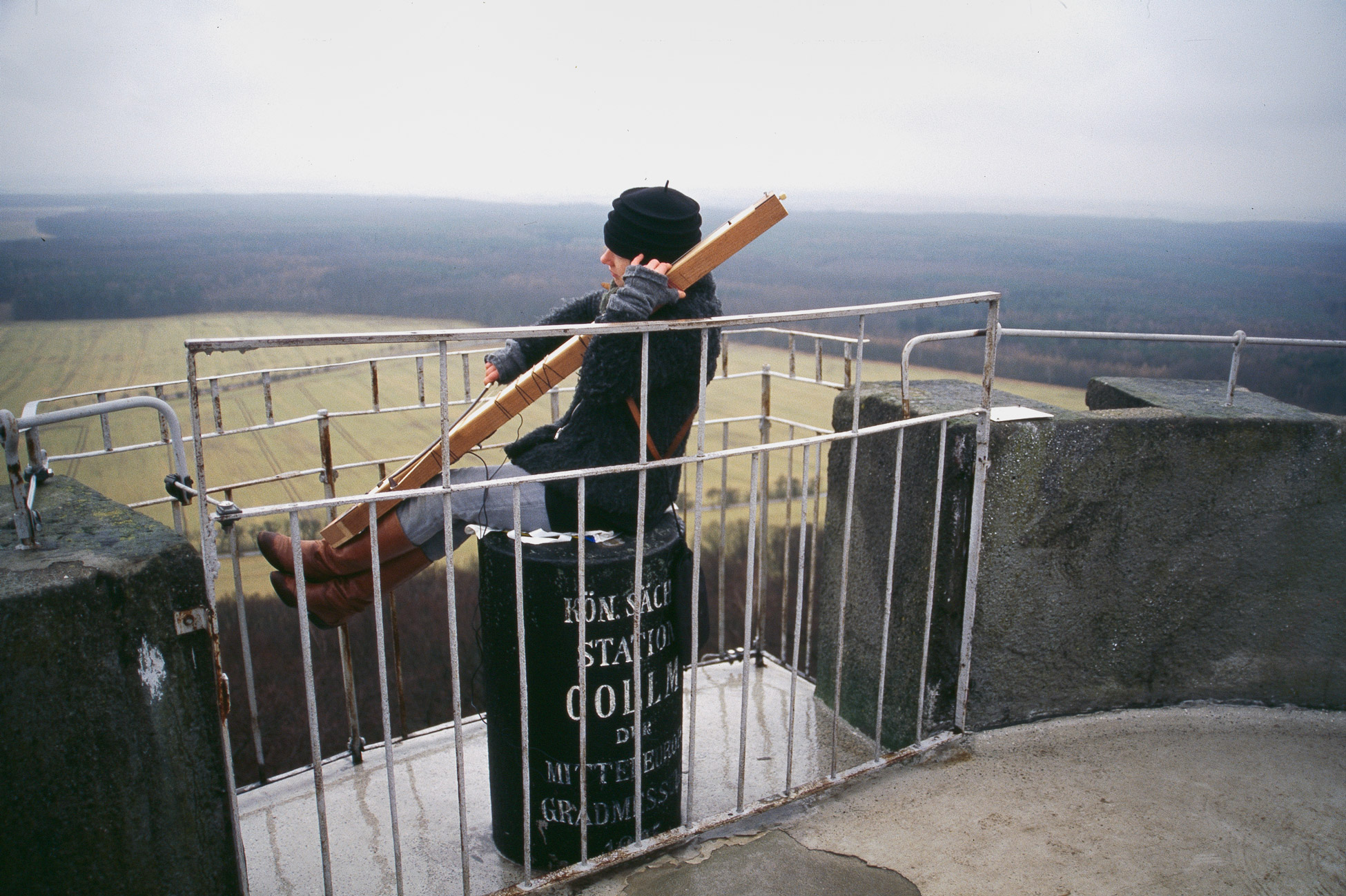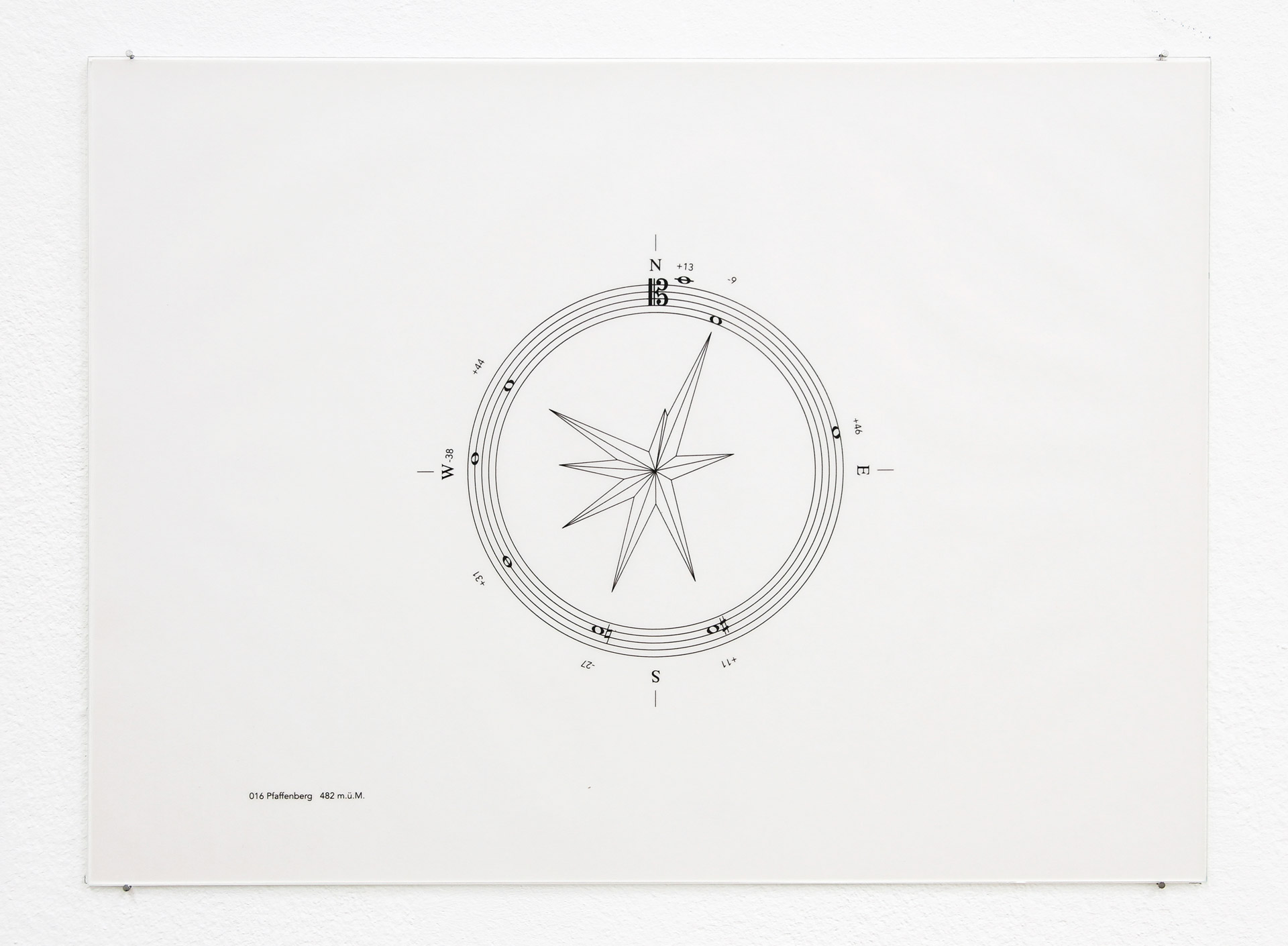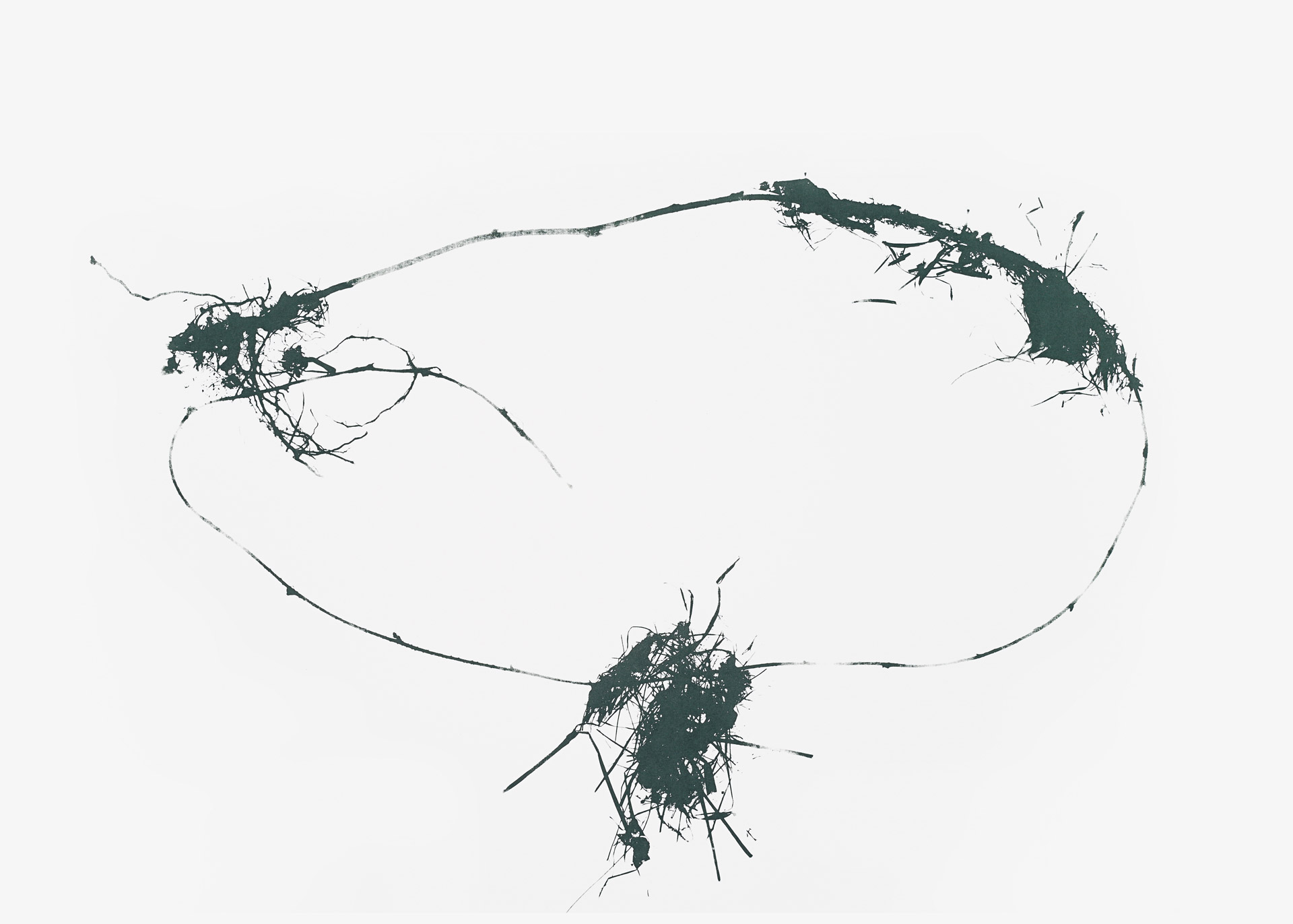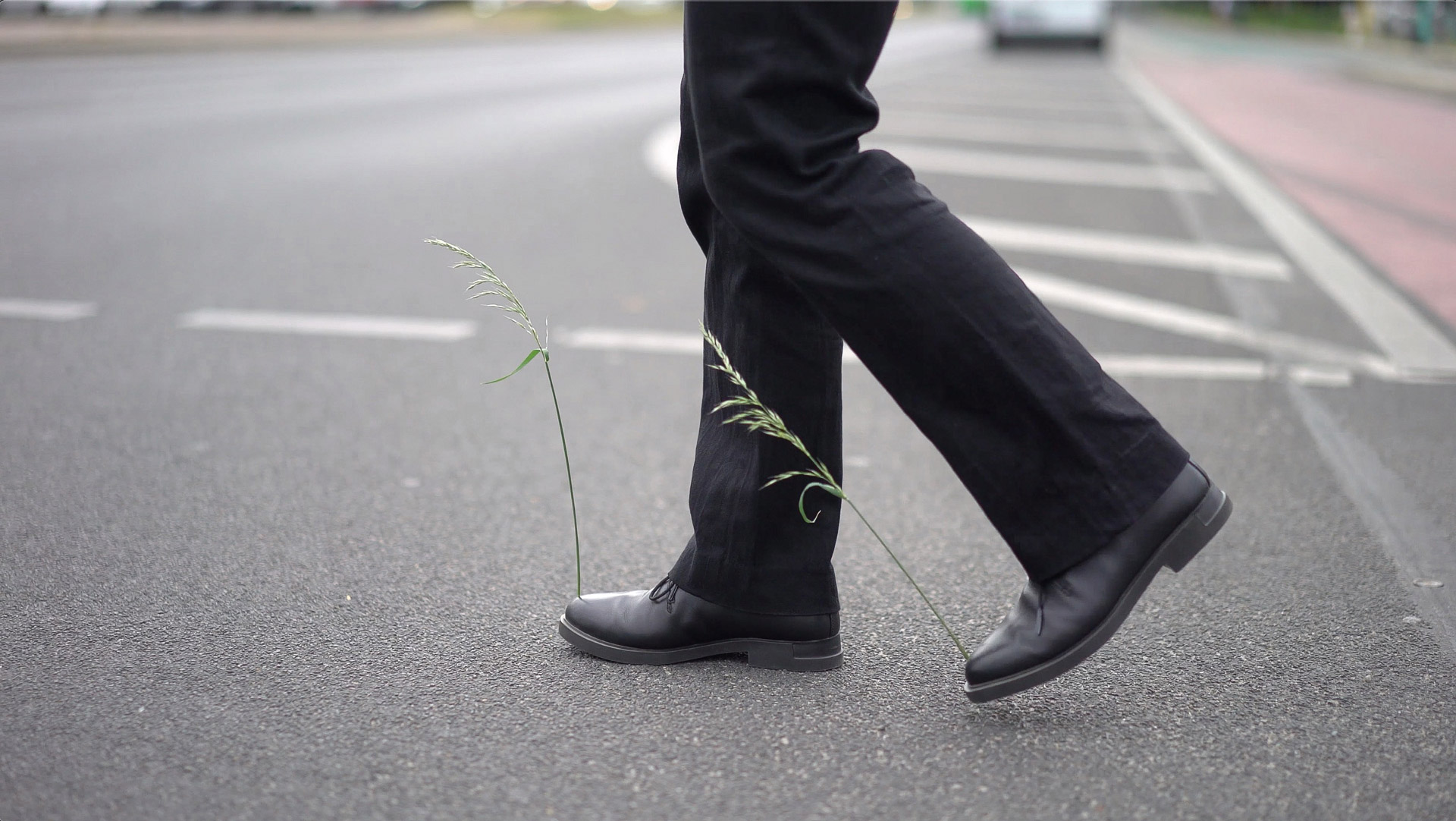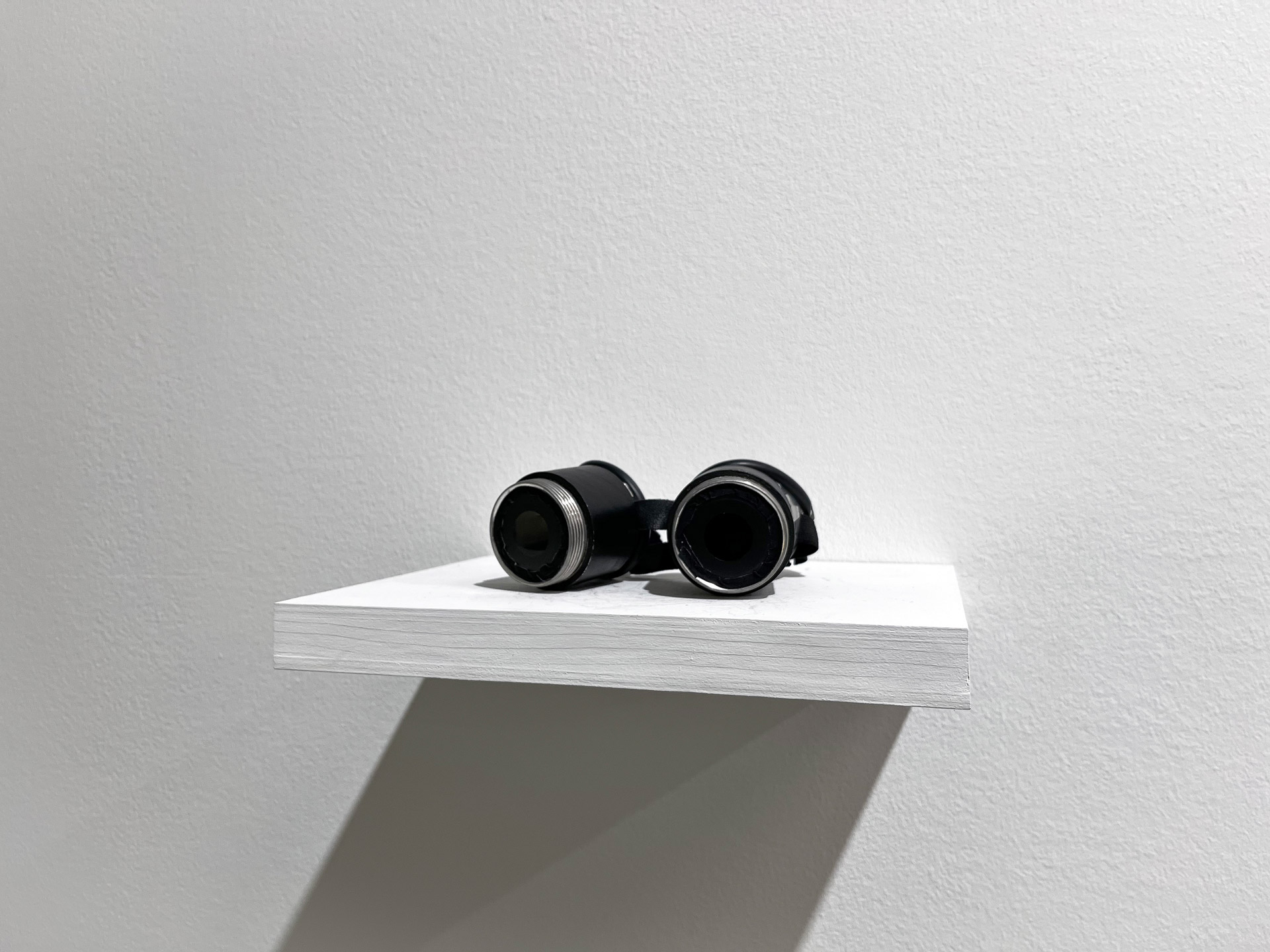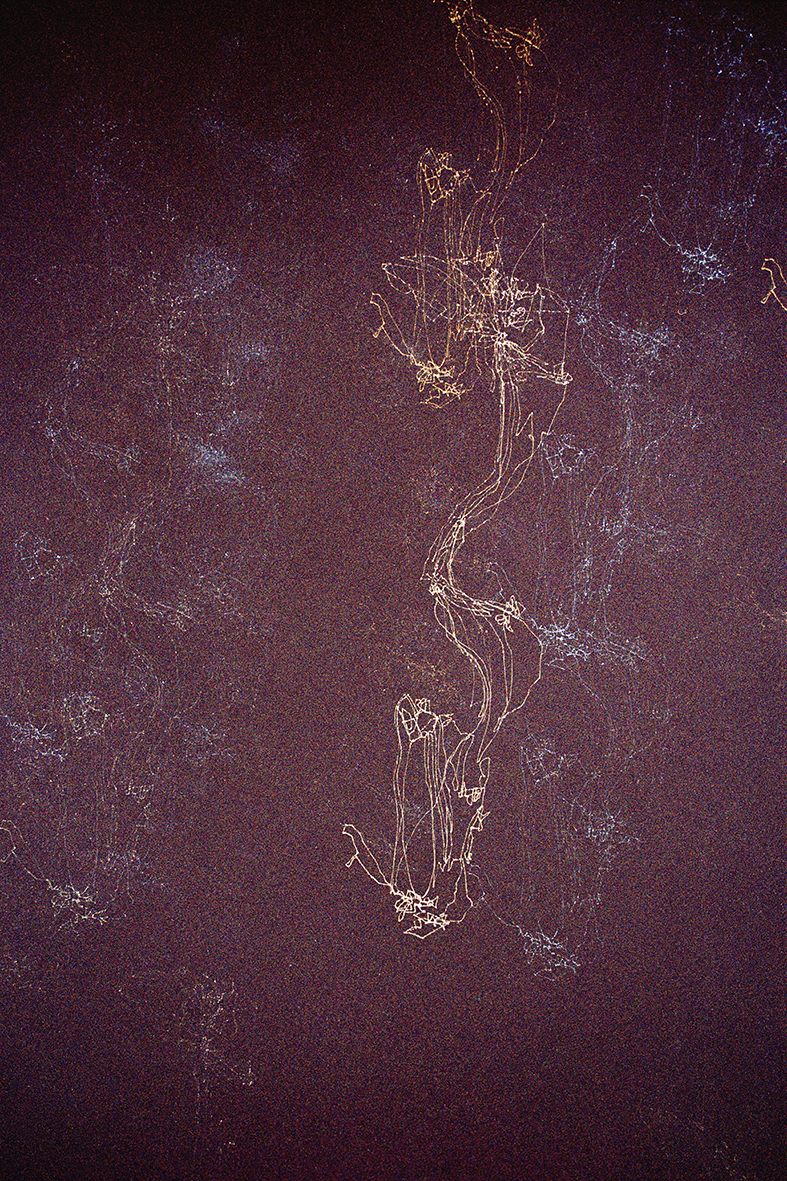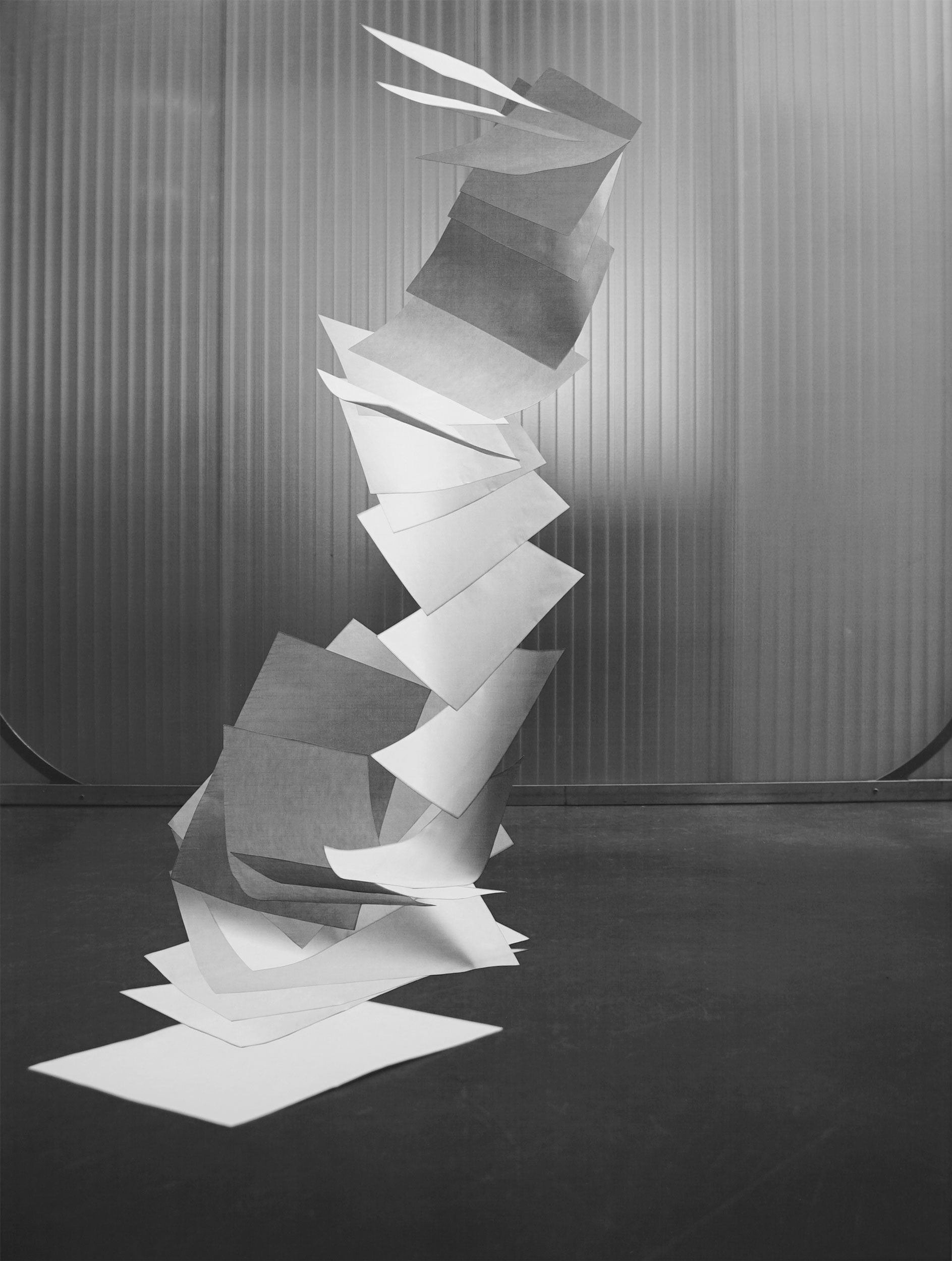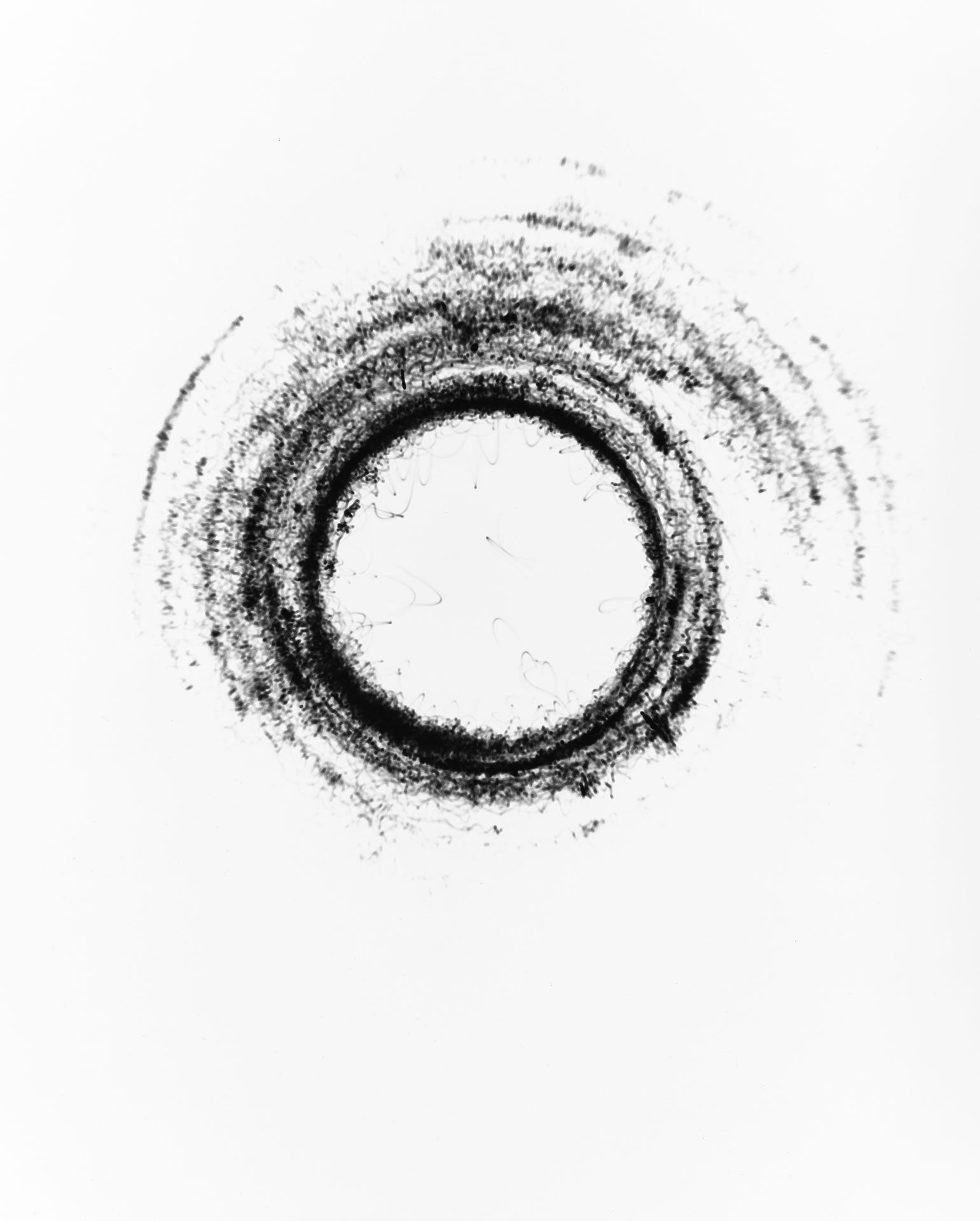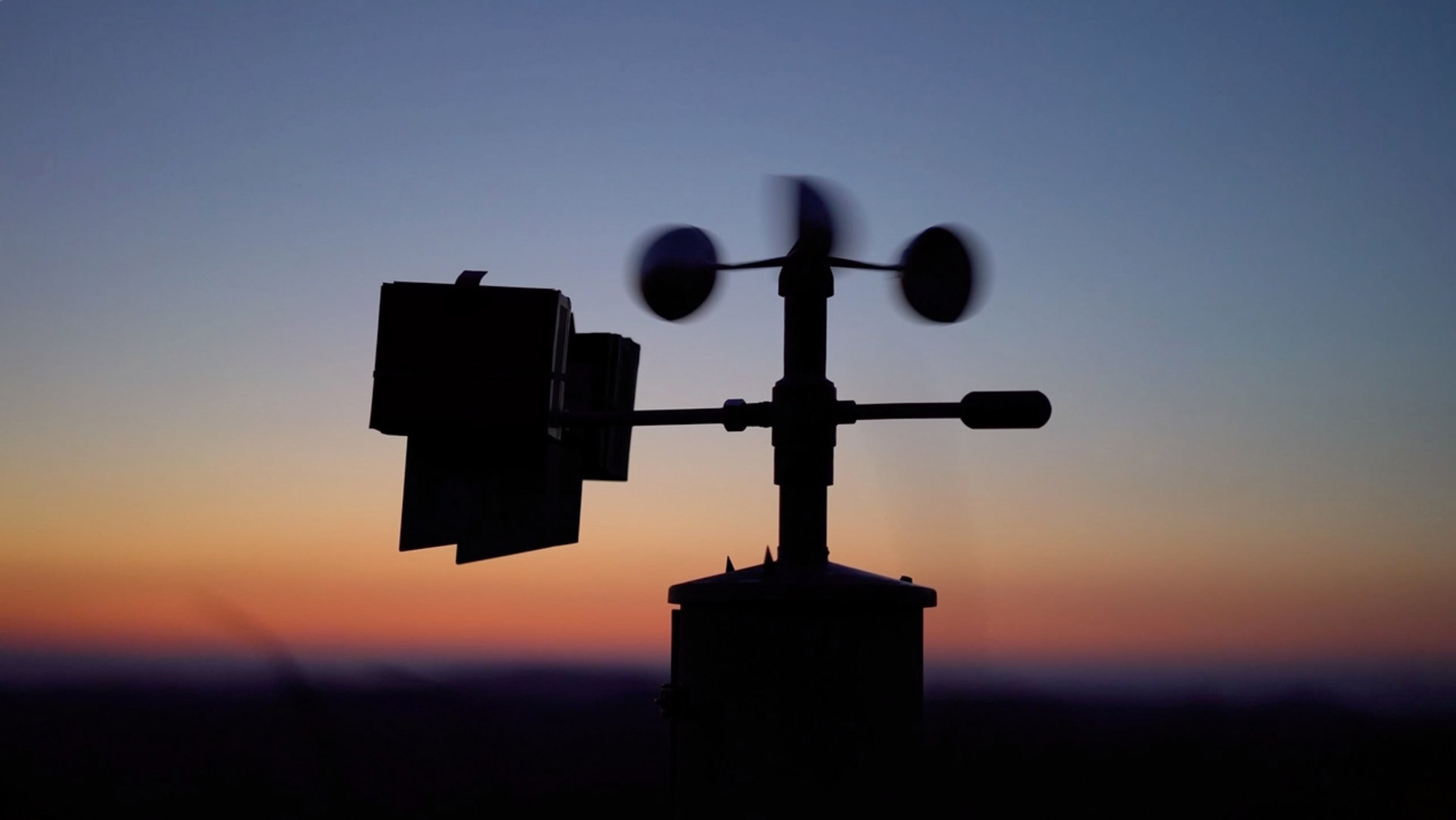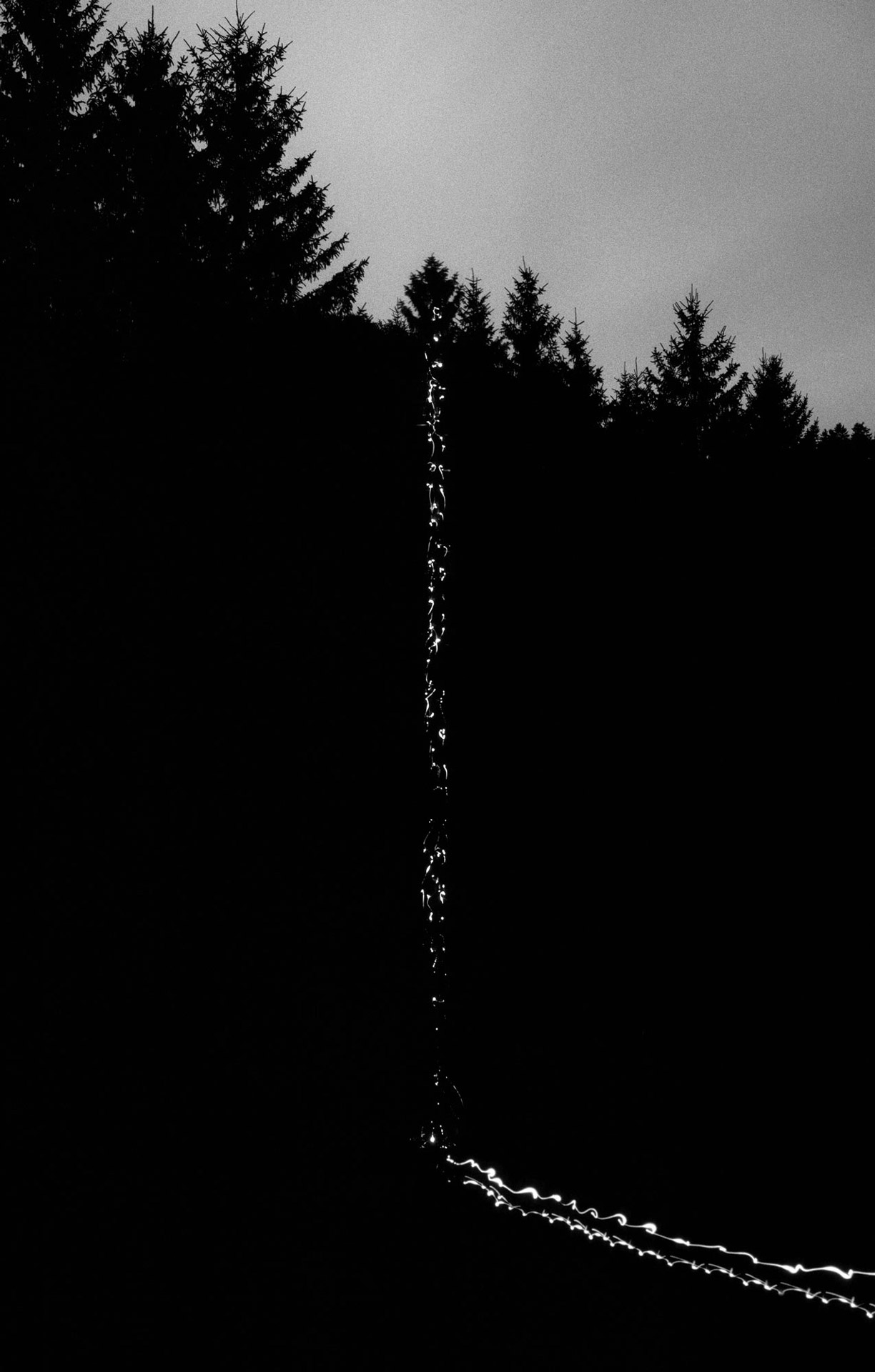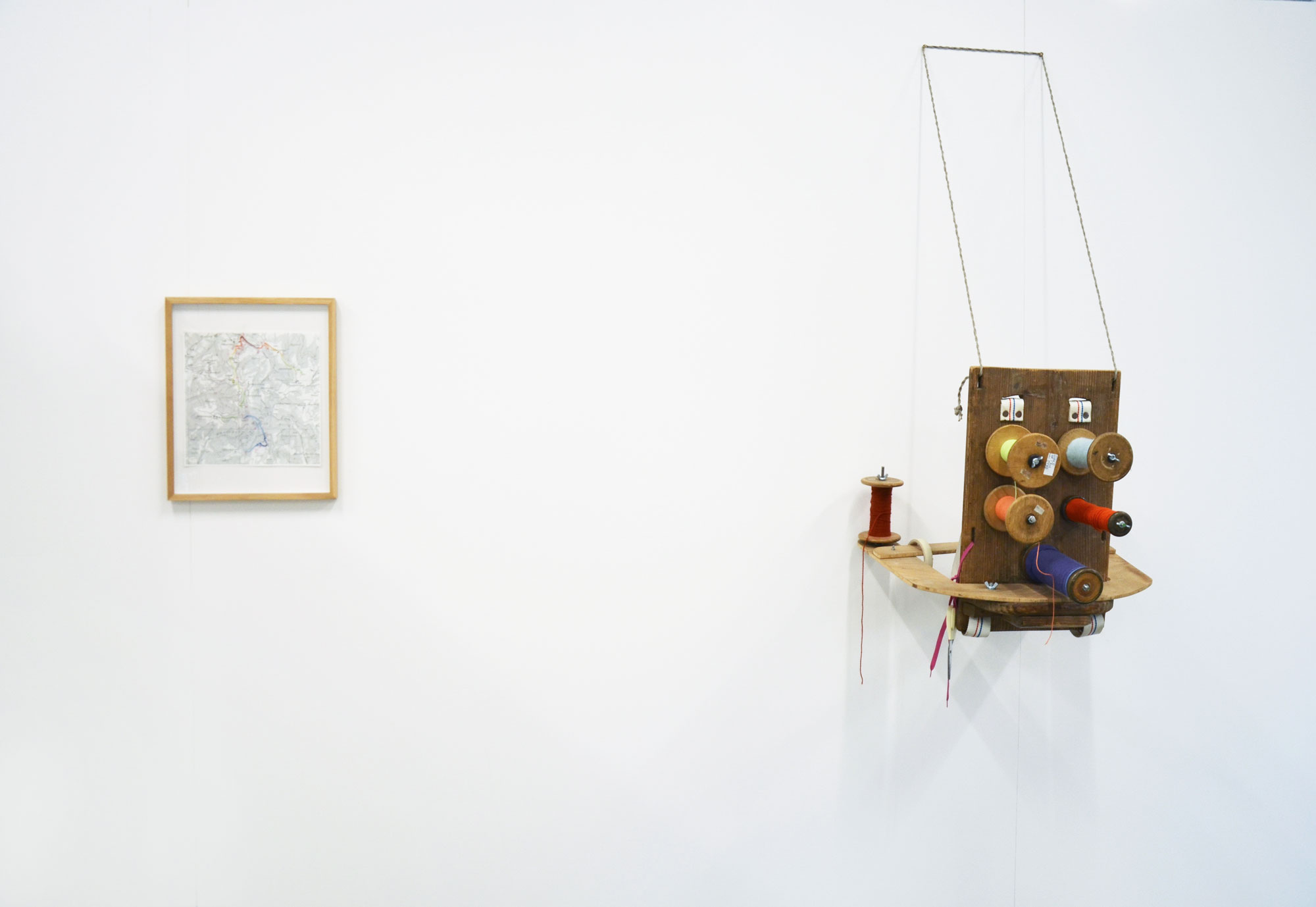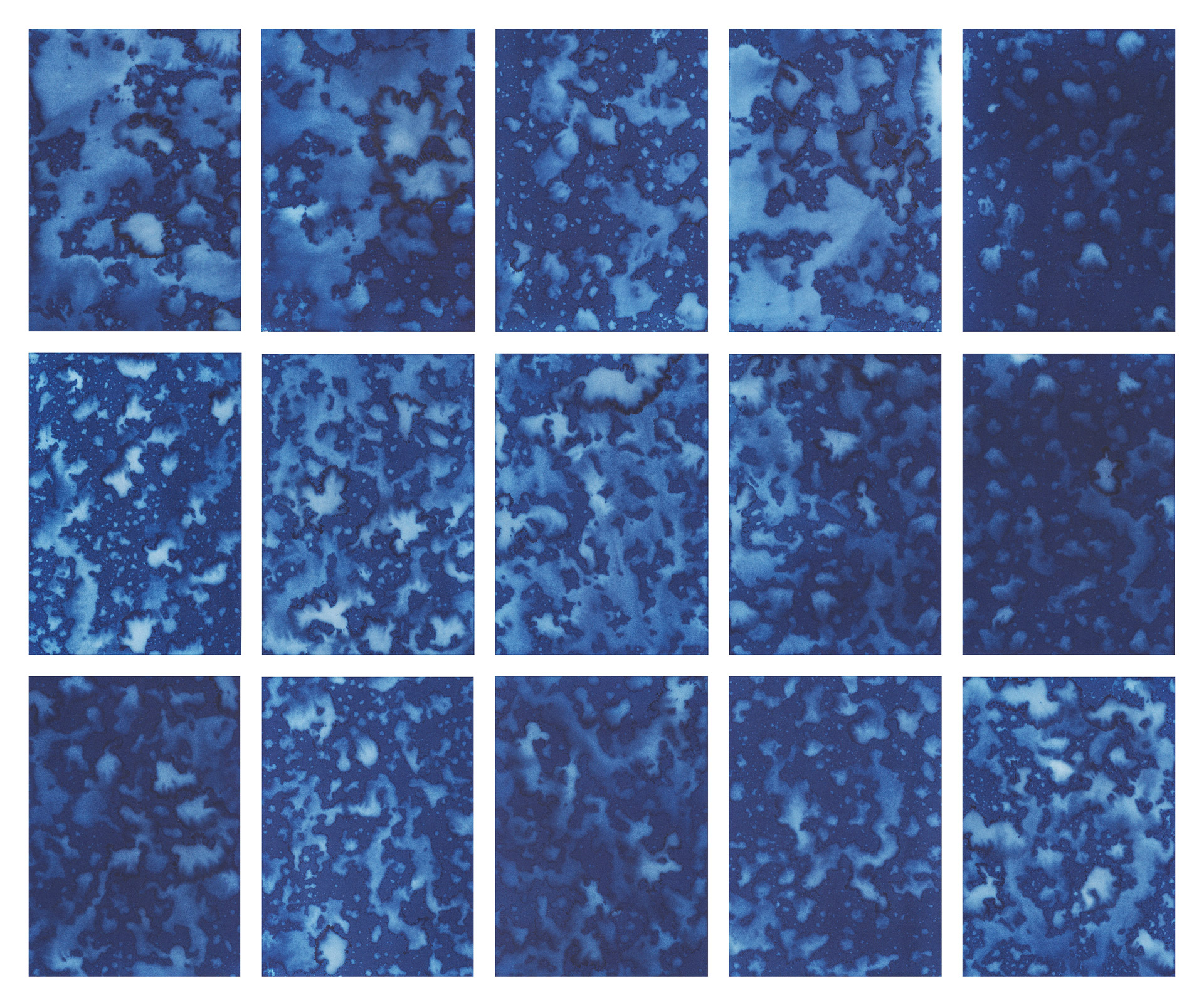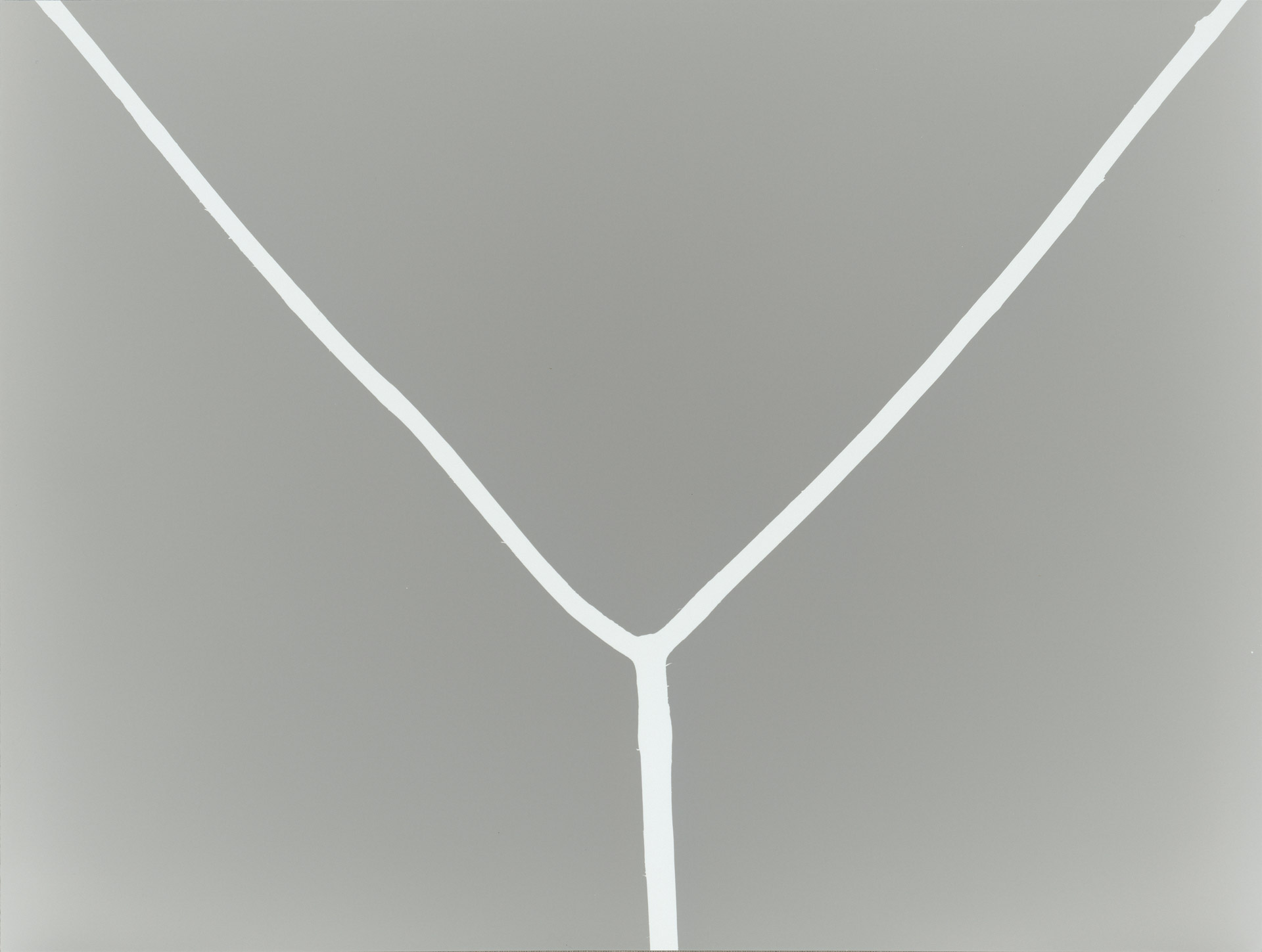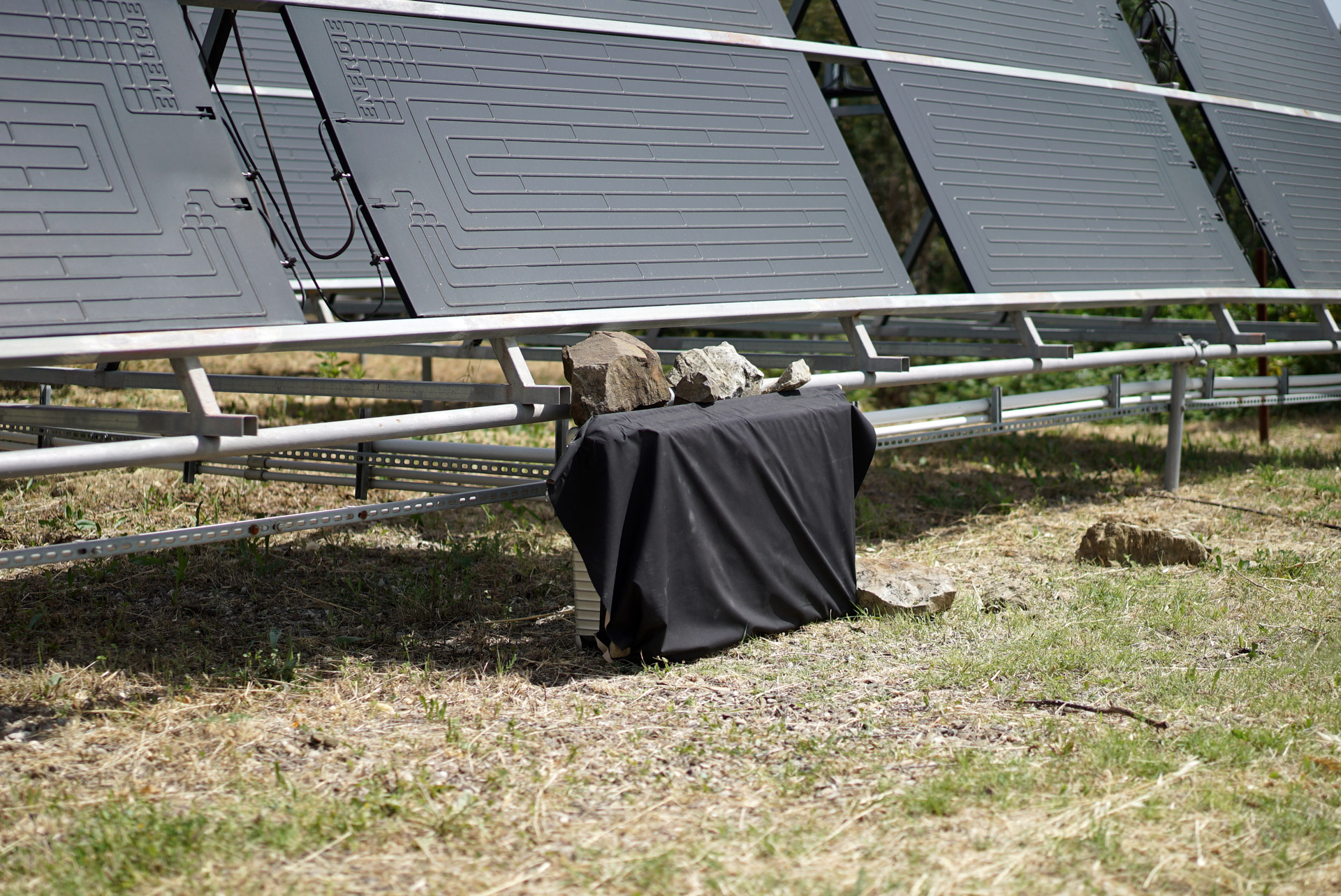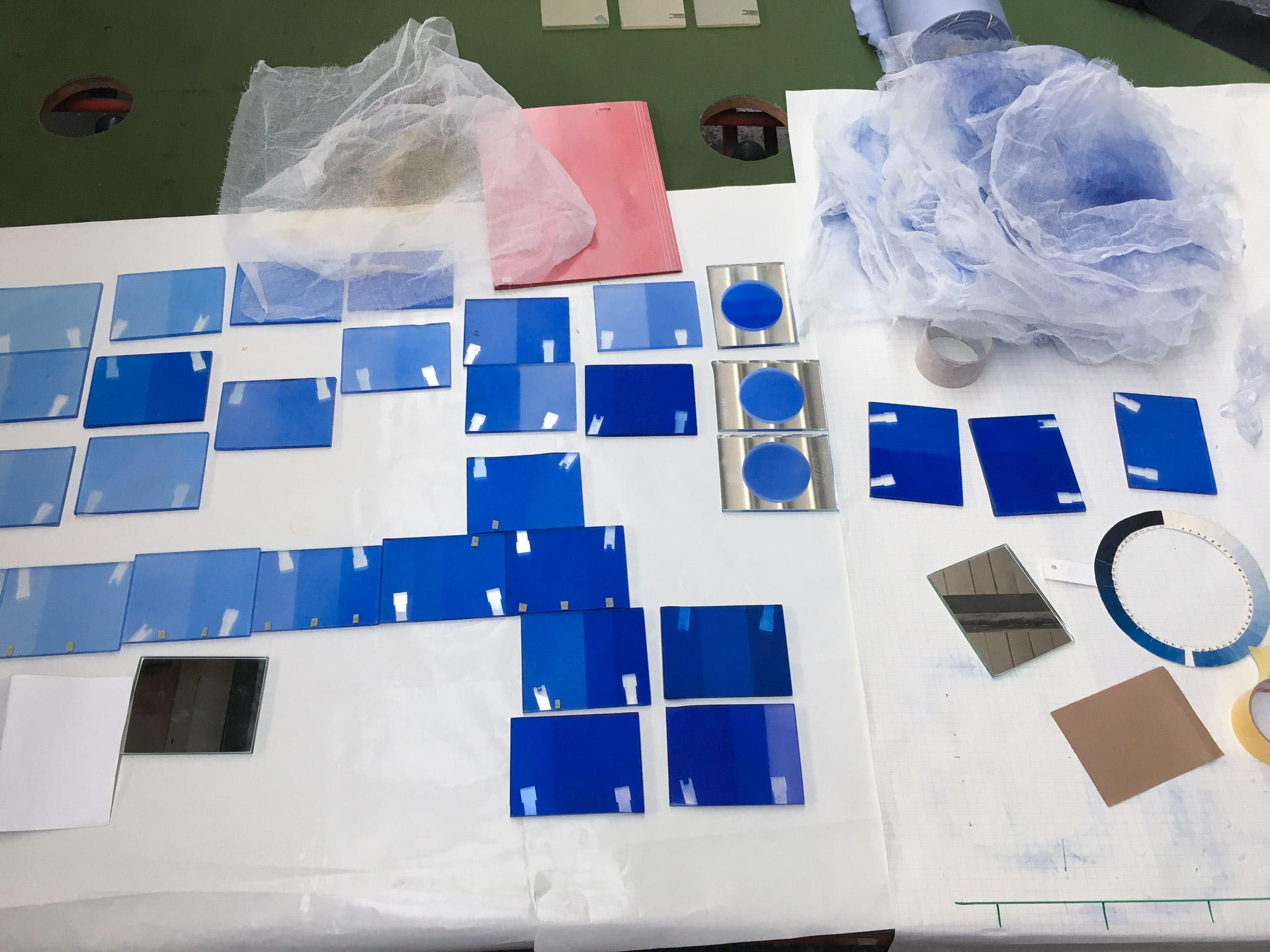Triklang (Triad)
2012
3-Kanal-Video-Klang-Installation, HD Video 16:9, 1 Std. 21 Min., 36 Inkjet-Prints, je 22.5 × 30 cm, Fotogramme, Holz, Glas, 100 × 130 cm, Instrument: Ohrmeter
//
3-screen video-sound installation,
16 : 9 HD video, 1 h 21 min, 36 inkjet prints, 22.5×30 cm each, photograms, wood, glass, 100 × 130 cm, instrument: Ohrmeter (ear meter)
Auf dem selbst gebauten Ohrmeter, einem Streichinstrument, das mit einer 1 Meter langen Bass-G-Saite bestückt ist, können geografische Distanzen in Saitenlängen und somit Tonhöhen übersetzt werden. Nahe Distanzen klingen hoch bis schrill, ferne Distanzen tief vibrierend. Im Jahr 2012 unternimmt Bignia Wehrli in Kollaboration mit dem Komponisten Peter Andreas eine akustische Landvermessung Sachsens auf der Grundlage des 1862 von Christian August Nagel erstellten Triangulationsnetzes. Die in Tonhöhen übersetzten Distanzen werden an den 36 Messpunkten kreisum in die Landschaft gespielt und mit Video und Mikrofon festgehalten. Jeder dieser geografischen Punkte offenbart seine einzigartige Melodie, die sich aus der Abfolge und Länge der Distanzen zu seinen Nachbarn ergibt. Zur Installation gehören eine grafische Windrosenpartitur aus 36 Drucken sowie eine trigonometrische kartografische Zeichnung aus Fotogrammen.
//
A homemade string instrument called an Ohrmeter, which is equipped with a 1-metre-long bass G string, translates geographical distances into string lengths and thus into audio frequencies. Close distances have a high, even shrill, pitch; long distances have a low, vibrating pitch. In 2012, Bignia Wehrli collaborated with the composer Peter Andreas to create an acoustic survey of Saxony, based on Christian August Nagel’s 1862 triangulation network. The distances between the 36 measuring points were proportionally measured on the string of the Ohrmeter and then played — by turning 360 degrees around — at each of the original 36 spots within the landscape and audio-visually recorded. Each point reveals a unique melody, which results from the sequence and lengths of the distances to the neighbouring points. The installation includes a graphic compass-rose score of 36 prints, as well as a trigonometric-cartographic chart made of photograms.

